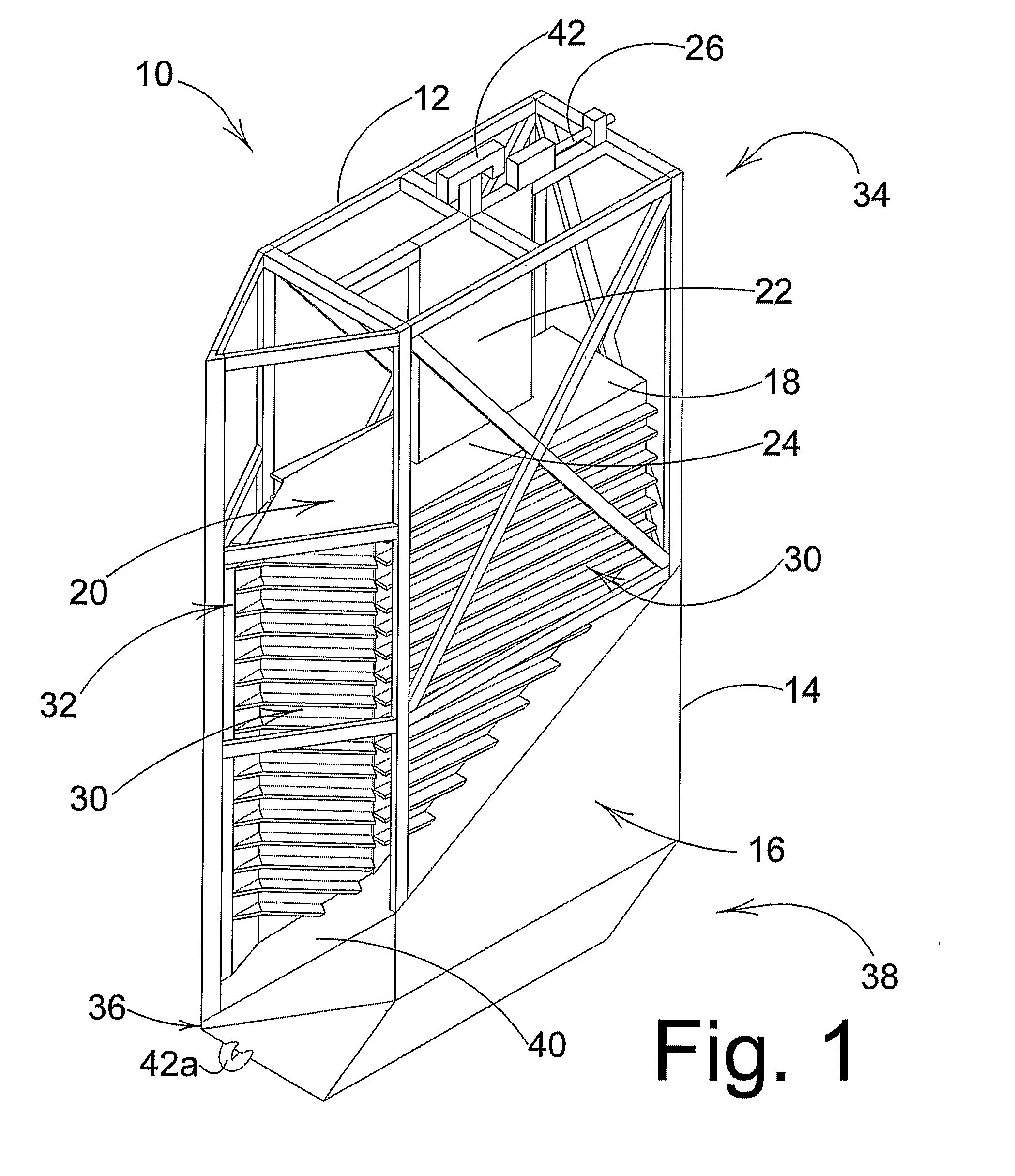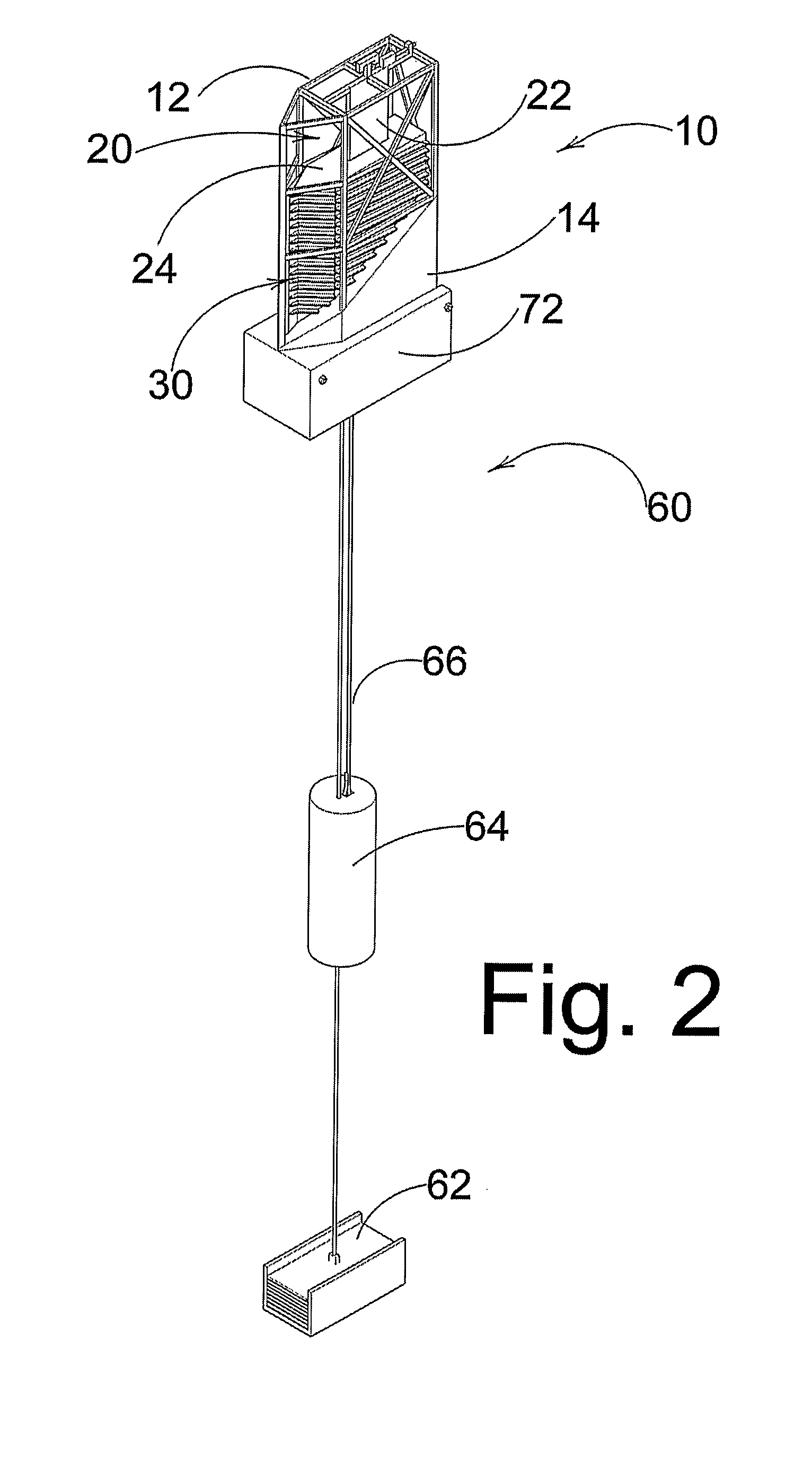Wave energy converter
a technology of wave energy and converter, which is applied in the direction of water-power plants, machines/engines, electric generator control, etc., can solve the problems of destroying many prior art land- or shore-based systems, unable to meet the requirements of the unit that is sufficiently robust to withstand the enormous, and unable to meet the requirements of the unit, etc., to achieve the effect of increasing the braking action, improving the braking effect, and optimising the amount of usable energy generated
- Summary
- Abstract
- Description
- Claims
- Application Information
AI Technical Summary
Benefits of technology
Problems solved by technology
Method used
Image
Examples
first embodiment
[0042]the wave energy converting apparatus 10 of the present invention, as illustrated in FIGS. 1 to 7 of the accompanying drawings, comprises an elongate support structure 12 designed to extend above a mean water level in the ocean. The apparatus 10 uses surging, heaving, buoyancy and hydrodynamic forces to extend the theoretical maximum energy extraction from 50% for a single heaving body to 100%. The support structure 12 is in the form of a frame having a submerged member 14 provided in connection therewith below the mean water level. The support structure 12 is also provided with a buoyant means to enable the support structure to float in the ocean in a generally upright orientation. In the illustrated embodiment the buoyant means is in the form of a buoyancy tank 16 provided within the submerged member 14, as will be described in more detail below. In this embodiment the buoyancy tank 16 is normally filled with sufficient air to give the submerged member 14 an overall positive ...
second embodiment
[0063]FIGS. 8 to 11 illustrate a wave energy converting apparatus 44 and its associated tension mooring system 50 in accordance with the invention. The wave energy converting apparatus 44 comprises an elongate support structure 45 designed to extend above a mean water level in the ocean. The support structure 45 is in the form of a vertically oriented column having a submerged member 46 provided in connection therewith below the mean water level. The support structure 45 of this embodiment is also provided with a buoyant means to enable the support structure to float in the ocean in a generally upright orientation. In the illustrated embodiment the buoyant means is in the form of a buoyancy tank 47 (not visible) provided within the submerged member 46. As with the previous embodiment, the buoyancy tank 47 is normally filled with sufficient air to give the submerged member 46 an overall positive buoyancy.
[0064]The apparatus 44 further comprises a float member 48 of positive buoyancy ...
PUM
 Login to View More
Login to View More Abstract
Description
Claims
Application Information
 Login to View More
Login to View More - R&D
- Intellectual Property
- Life Sciences
- Materials
- Tech Scout
- Unparalleled Data Quality
- Higher Quality Content
- 60% Fewer Hallucinations
Browse by: Latest US Patents, China's latest patents, Technical Efficacy Thesaurus, Application Domain, Technology Topic, Popular Technical Reports.
© 2025 PatSnap. All rights reserved.Legal|Privacy policy|Modern Slavery Act Transparency Statement|Sitemap|About US| Contact US: help@patsnap.com



